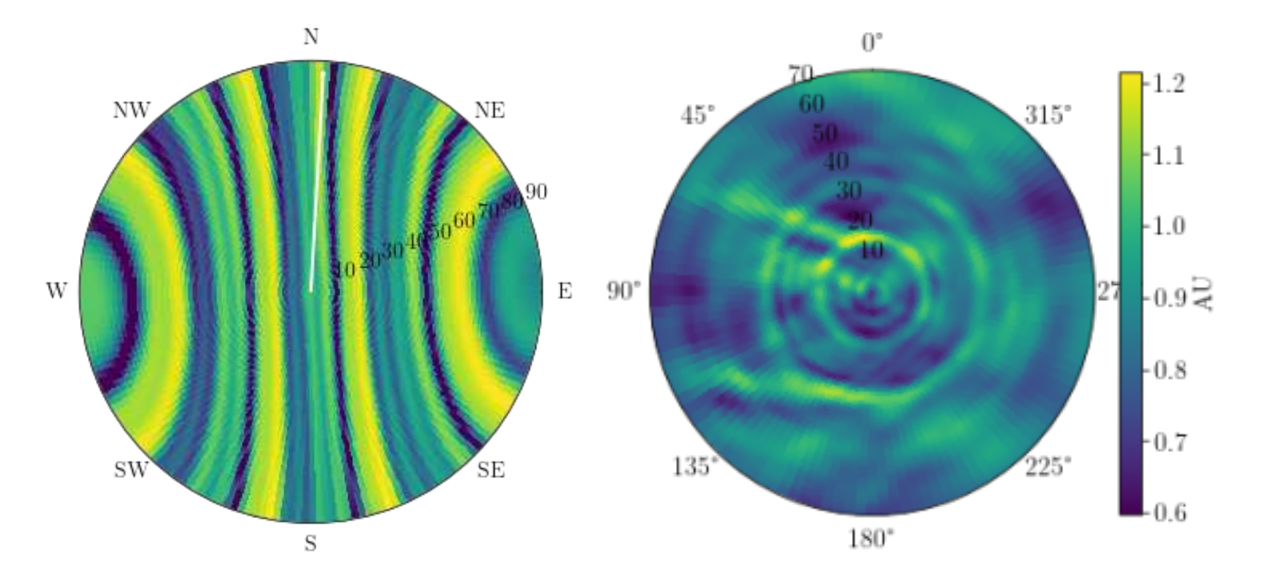Daily Image
24-05-2022LOFAR 2.0 Dwingeloo Test Station First Fringes
| Submitter: | Albert-Jan Boonstra |
| Description: | The LOFAR 2.0 upgrade of the station electronics will allow joint observations of the low frequency band (10-80 MHz) and the high frequency band (110-190 / 210-240 MHz). This, together with improved ionospheric calibration approaches will dramatically improve the spatial resolution and image quality. After five years of hard work, a prototype telescope station was installed at the antenna field close to the Dwingeloo telescope and the ASTRON headquarters. This Dwingeloo Test station (DTS) was opened recently, May 10th. One of the first milestones with a radio interferometer such as the DTS is showing that signals from a common source are coherent and can be correlated, or in other words showing phase information or 'fringes'. The left figure shows a DTS fish-eye image of the sky at 88 MHz, using 6 low-band antennas in an East-West configuration, and with an integration time of 10 s. This image is dominated by an 88 MHz Smilde FM transmitter, located within a few degrees North, depicted by the white line. Clearly visible are the maxima and the spatial nulls when scanning along the horizon. As the array is configured East-West, the response of the array for fixed transmitters is (apart from the antenna element responses) constant in the direction perpendicular to the East-West line. Encouraged by this 'first fringe' test, we tried to create a sky image. The image on the right is centered on the North Celestial Pole (NCP), local RFI will show up as concentric circles in such an image, which indeed are clearly visible. The image is based on 9 antennas, 7 subbands, and 4500 time slots or about 12 hours of observing. Cas.A is not (yet) visible in this plot as the image is not calibrated, and as the RFI is not subtracted. Please note that for an all-sky East-West interferometer such as the DTS the hemisphere below the equator will be folded back to some extent to the upper hemisphere. But this all will be part of the commissioning so stay tuned! Credit to G. Schoonderbeek for the DTS station correlator data and M. Mevius for the data processing using GRATE software. |
| Copyright: | ASTRON |
| Tweet |  |
